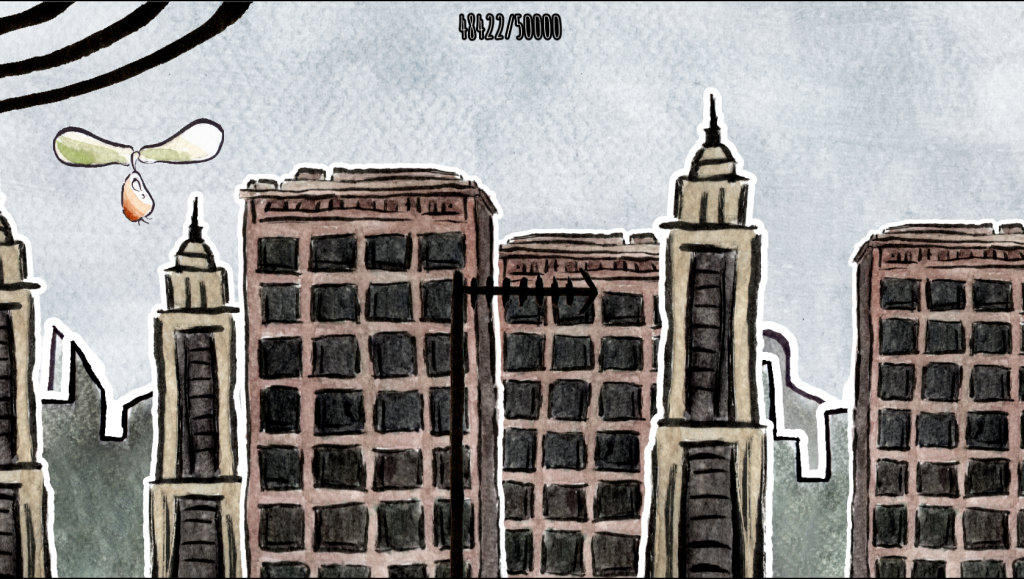
The roots of all our problems has a gameplay could be described as connatural to „Flappy Birds“, but with a strong focus towards story and graphical design.
The games story is about a flying seed that searches for a place to grow but can’t do so as the whole space is either destroyed or occupied by humanity, and a violent twist of the situation doesn’t prove to be helpful to the protagonist either. I don’t want to say too much, but: Towards the end, the predictability is broken by some sharp turns right through the wall. At first, I thought that this was a cute piece of well-meant kitsch – in the end I have to say that it is one of the better contributions to the discussion of environmental destruction that I have perceived in a fictitious setting recently.
The graphical design is exceptional and sophisticated: Hand made aquarelles were scanned and used as sprites, giving the game a unique and very pretty appearance; even though this method is rather compound, the developers included a wide range of images and settings. Beneath the well done SFX- and musical design the whole plot is fully read out, and even features a voiced side-role. Visual- and audio design work well together to create a dense and coherent atmosphere that is not fully broken through the postmodern story.
The gameplay is – however – a bit of a bullet to bite. It works RNG based, and in a way that only worked well by chance over short passages of the game; sometimes it seems hardly possible to evade obstacles, sometimes there are hardly any. In the worst case, this game is frustrating without being difficult. I was honestly relieved that there was no name associated with „game design“ in the credits. One could say that the game uses the medium to bind our attention – but it would have worked much better as a short animated movie, as there is no interaction or freedom of decision within the whole thing.
But this doesn’t matter: Design and story are easily strong enough that it could carry this game even without gameplay. Given the high quality and dedication of the production in this area, the weaknesses can be easily forgotten – even more so as the games main point is a statement that exceeds, in its implications, the direct topic of the game by far.
The game is free software, and made with Godot by OramaInteractive, a game development collective claiming that they aim to live from game development, but clearly they do not take no excuses about artsiness and seem to be very coherent about politics. They also created a application called Pixelorama with the Godot Engine (don’t you know that graphic manipulating applications ought to be done with SDL2? scnr). The game was initially created for a Jam but heavily extended afterwards; can be played on Windows, Linux, or directly within the browser – the native Linux version ran fine on OpenSuse Thumbleweed.
Schreibe einen Kommentar